Introduction: Dosage Forms Of Drugs (Cram)
1/64
There's no tags or description
Looks like no tags are added yet.
Name | Mastery | Learn | Test | Matching | Spaced |
|---|
No study sessions yet.
65 Terms
What are the three dosage forms of drugs?
- Liquid
- Solid
- Semi–solid
A preperation containing a solute or several solutes completely dissolved in a solvent
Solution
Indicate if a solution needs to be sterile for the following routes: Ophthalmic, topical, and parenteral
Topical - Doesn't need to be sterile
Parenteral/Ophthalmic - Must be sterile
If a drug solvent is water, what can the drug be called?
Aqueous solution
True or false: Aqueous solutions tend to be more irritating than lipid solutions
False. Aqueous solutions are generally non–irritating
What is a common solvent and stabilizer for many drugs. Used IM. It is somewhat irritating on injection and cannot be given to horses and small animals
Propylene glycol
Example: Bovine oxytetracylines like Oxyvet®
Why can you not inject large quantities of propylene glycol IM?
Very painful
Name some adverse effects of injecting large volumes of propylene glycol IV
CNS depression, hemolysis, cardiovascular effects, and apnea
Similar to propylene glycol, but can be used for all injection routes
Polyethylene glycol
Fill in the blank: will have alcohol as a solvent
Tinctures will have alcohol as a solvent
Example: Iodine tincture
True or false: Tinctures are for topical use only
True.
Note: Only use if the skin is unbroken. Alcohol stings!
Phenomenon where a drug travels to a specific location in the body which leads to a reduction in the concentration of the active drug before it reaches the site of action or systemic circulation
First pass effect
Drug carrier with a loose binding to the drug. It delays absorption of an IM or SQ injection. It has a slight anti–inflammatory effect
PVP/povidone (full name: polyvinylpyrrolidone)
What adverse effect does povidone have in dogs?
Induces the release of histamine, which drops blood pressure
Drug stabilizer that is toxic to dogs if ingested
Polysorbate 80
Saturated aqueous solutions of sucrose and water. They are designed to mask the taste of the drug, and may contain flavoring
Syrups
Solutions containing water and alcohol with sweeteners and flavoring added
Elixirs
You mix two solutions and the mixture turns cloudy, can you still inject it?
NO. This means the drugs are chemically incompatible, this is VERY BAD. It can never be injected
Fill in the blank: Don't mix _______ [kind of drug] with ANY other kind of drug.
antifungals
True or false: Mixing acidic and alkaline drugs neutralizes the pH, making the drug safer
False. Don't mix acidic and alkaline drugs
What three types of drugs should you NOT give with antibiotics?
- Other types of antibiotics
- Steroids
- Vitamins
Why can't you mix Valium (diazepam) with Versed (midazolam)?
Because Valium is lipid soluble and Versed is water solule
Liquid preparation where the solute is not dissolved in the vehicle
Suspension
Note: These are rarely given IV
Substance in a suspension that keeps the solute dispersed in the liquid and usually increases the viscosity of the mixture
Suspension agent
True or false: Suspensions are given orally, IM, or topically, but rarely IV
True
Combination of a suspension and a solute
Mixture
Mixture that is for topical use on skin or the eye, they are designed to be soothing
Lotion
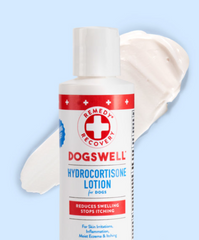
Mixture that has an oily base which allows for easy spreading on the skin, applied with vigorous rubbing
Liniment

Mixture that has an astringent (drying, antiseptic, or irritant property
Paint
Mixture that is intended for dilution with water, that is applied to the outside of an animal then left on
Dip

Mixture of two immiscile liquids (eg. oil and water)
Emulsion
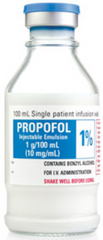
Mixture that is a suspension or emulsion that is given orally
Drenches
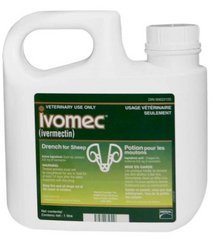
Mixture that is often a solution that is designed for ophthalmic or otic use. Sometimes for oral use (can be suspensions, solutions, or emulsions)
Drops
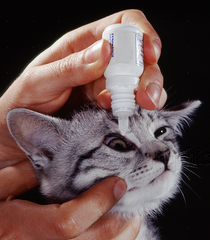
Mixture that is a solution, suspension, or crystalline powder that can come in single dose vials, multiple dose vials, or ampules
Injections

Mixture that is intended for topical or possibly ophthalmic administration
Spray
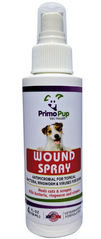
What are the four types of semi–solid drug preparations?
- Cream
- Ointment
- Paste/poultice
- Suppositories
Fill in the blank: Ointments act as _______, which means they form a protective film which prevents loss of moisture to the environment. This makes them good on dry lesions.
emollients
What are the three types of ointment bases?
- Epidermic ointment base
- Endodermic ointment base
- Diadermic ointment base
Which type of ointment base is this? It completely penetrates the skin, the chances of systemic effects are increased, and it includes water–soluble ointment bases
Diadermic ointment base
Which type of ointment base is this? It has very little to no skin penetration. They are generally used as emollients (to soften and protect skin). They are very greasy because they include wax and petroleum
Epidermic ointment base
Which type of ointment base is this? It can penetrate deeper skin layers, but drugs mixed in them do not enter circulation
Endodermic ointment bases
Example: Lanolin
Fill in the blank: Ointments can also be classified as ______ or ______ based on their ability to absorb water and not lose their consistency.
hydrophilic, hydrophobic
Which should you not use on weeping wounds? Hydrophilic or hydrophobic ointments?
Hydrophobic ointments should not be used on weeping wounds
Note: Weeping wounds can only be treated with preparations of drug that are miscible with body fluids
Semi–solid preparation that contains both oil and water. The water evaporates, leaving the oil as a protective layer. They can be used on weeping wounds
Creams
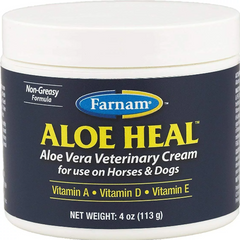
Semi–solid preparation that is used topically to carry medications that are intended to alleviate inflammation
Pastes/poultices
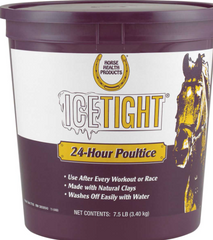
Semi–solid preparation that are intended to be inserted into body orifices
Suppositories
Note: Not often used in veterinary medicine

Which are hydrophobic, and which are hydrophilic? Pastes/poultices, suppositories, ointment, and creams
Hydrophilic: Creams, suppositories
Hydrophobic: Pastes/poultices, ointments
Solid tablets that have no special coating, they tend to crumble and dissolve easily
Compressed tablets (C.T.)
Solid tablets that are coated with sugar so no bad flavour is left in the mouth. The coating does not protect the stomach
Sugar coated tablets (S.C.T.)
Solid tablets that have a film with no or mild pleasant taste
Film coated tablets (F.C.T.)
Solid tablets that have a coating that allows tablets to pass through the stomach without dissolving
Enteric coated tablets (E.C.T.)
Solid tablets that are made under aseptic conditions. They are made to be dissolved and used as an injection
Hypodermic tablets
Three kinds of solid compressed cylinders of dried or powdered drugs. They can be used orally or intra–uterine
- Pellets
- Bolettes
- Bolus
Note: Pellets are smallest, boluses are the largest
Solid medication that is contained in gelatin that dissolves in the stomach
Capsules
Solid that is a very hard pellet designed to dissolve very slowly when placed under the skin. Mostly used to give feedlot animals hormones
Implants
Solid that is impregnated into a plastic surface for a very slow release into the air. Examples: flea/tick collars, and insecticide ear tag for cattle
Resins
Solid that is intended to be mixed with feed, water, or salt so the animal will eat/drink it volutarily. It can also be mixed with water and be used as a drench
Powders
Solid that is a modification of powder. It is done to improve the solubility or mask an unpleasant taste
Granules
Inactive ingredient that sticks tablets together and prevents the breakage of the tablets
Binders
Inactive ingredient that prevents ingredients from adhering to production machinery, packaging, or each other
Lubricants
Example: Magnesium stearate
Inactive ingredient that allows the tablet to dissolve more quickly when in contact with water
Dissolution aids
Example: Sodium bicarbonate
Inactive ingredient that prevents tablets or ingredients from degrading due to humidity
Dessicants
Example: Little packages that contain silica gels that come in
Inactive ingredient that adds bulk so that tablets are large enough to allow easy administration
Diluents
Examples: Sucrose, lactose
Inactive ingredient that is added to mask the taste of the ingredients
Flavoring
True or false: Drug labels only need to list active ingredients
False. Drug labels must list all active and inactive ingredients